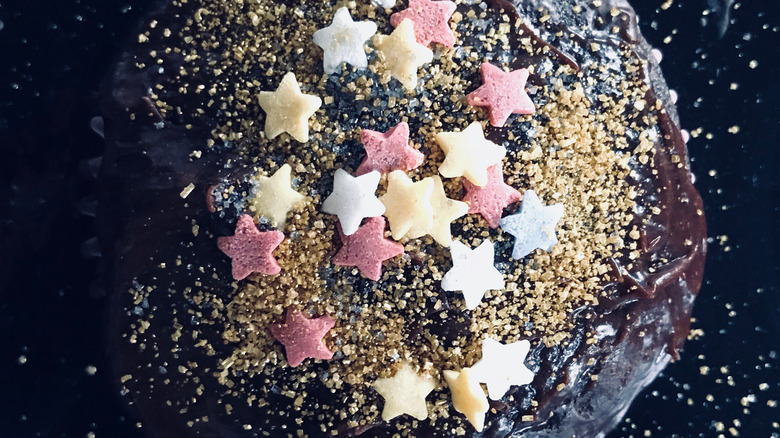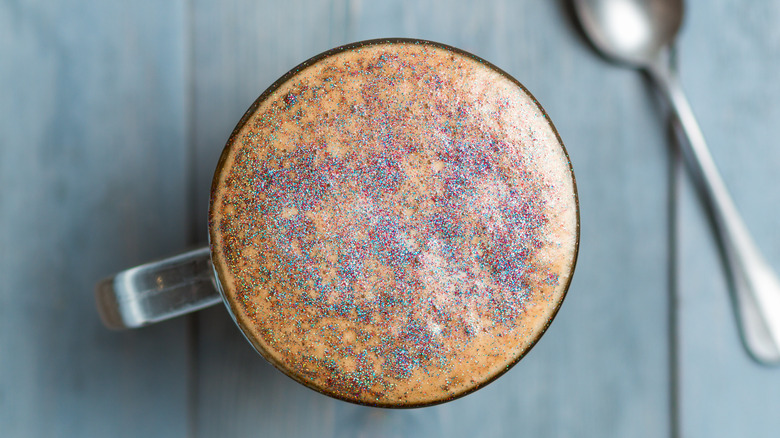This Is What Edible Glitter Is Really Made Of
Have you ever been in the mood to indulge in bedazzled baked goods? (Sure you have, because we all deserve to eat like princes and princesses.) Well, thanks to edible glitter, cookies, brownies, doughnuts, cakes, bagels, and breads can shimmer and shine. Of course, sweets are not the only food on which edible glitter can be sprinkled. Coffee shops around the world are adding glitter to teas, lattes, and smoothies. A pub in London even added edible glitter to its gravy during the 2017 holiday season (via The Sun). It's also been spotted on pizzas, in cocktails and beer, and on various fruits and berries. This colorful, flashy trend is not only Instagram-worthy, but it's also a bit concerning to some consumers.
What, exactly, is edible glitter made from? Edible glitter — which can usually be found at many craft stores, big-box retailers, or purchased online — adds no additional flavor to food items, just aesthetics. The common ingredients in edible glitter include sugar, gum arabic, maltodextrin, cornstarch, and color additives specifically approved for food use, such as mica-based pearlescent pigments (via U.S. Food & Drug Administration).
Is edible glitter safe to consume?
In short, these spangled treats should be enjoyed in moderation — and with caution. Home and commercial bakers need to make sure that the edible glitter they're using to add some pizzazz to their menu is truly edible. Several manufacturers' products are labeled as non-toxic, but this claim doesn't always translate to them being edible. Glitter that's traditionally used in arts and crafts, for example, is made from plastic, which is not designed to be consumed. Some brands of so-called edible glitter, however, are not using food-grade ingredients.
To be on the safe side, here are some basic rules to follow: "Consumers should carefully check the label of decorative products they consider for use on foods," the FDA explained in a 2016 statement. "Most edible glitters and dusts also state 'edible' on the label. If the label simply says 'non-toxic' or 'for decorative purposes only' and does not include an ingredients list, the product should not be used directly on foods."
As you would with any ingredient, always carefully check to make sure the "edible" glitter you're using to make your cookies spectacular is fit to be eaten. As the saying goes, "All that glitters isn't gold." And as it turns out, all that glitters isn't fit for human consumption, either.

